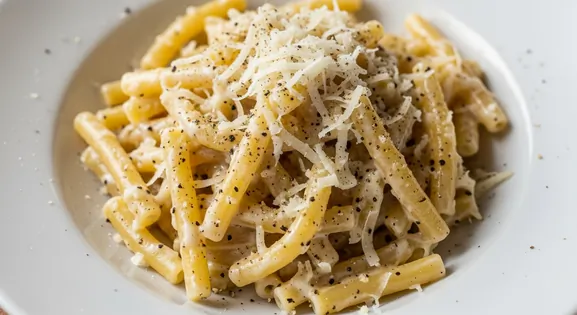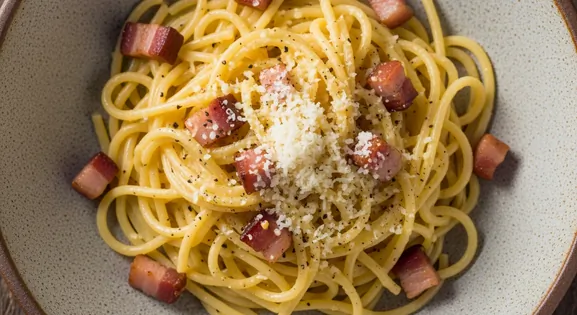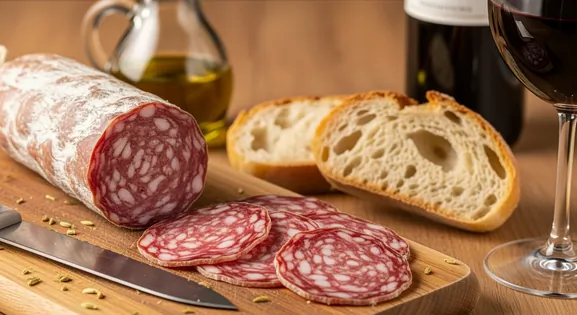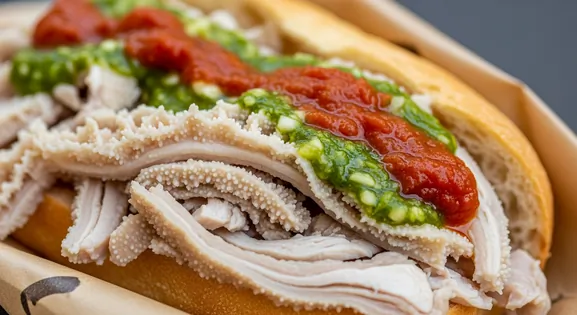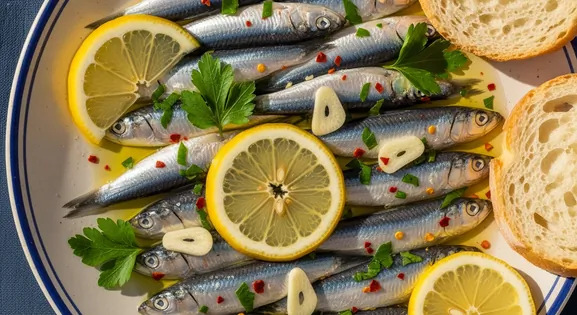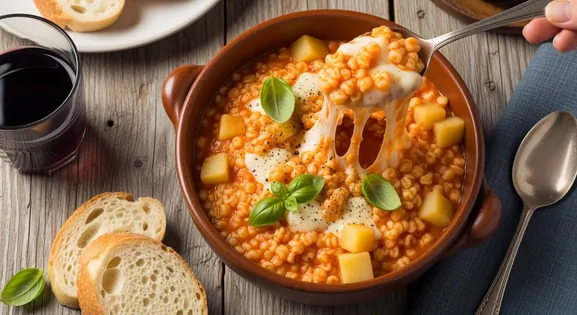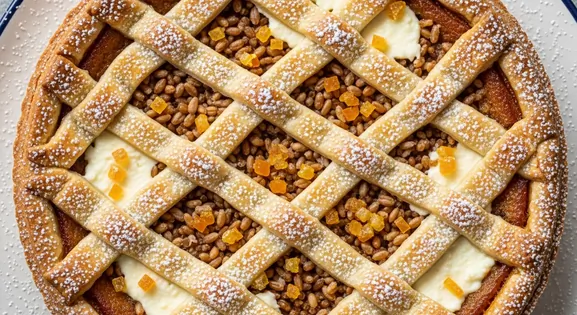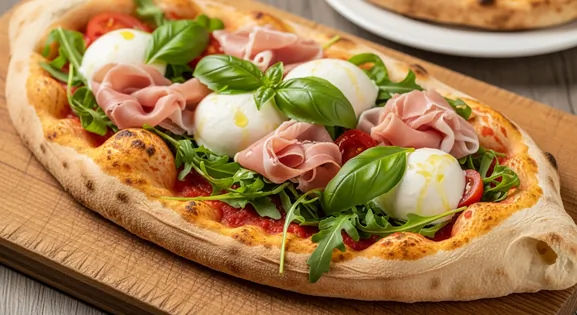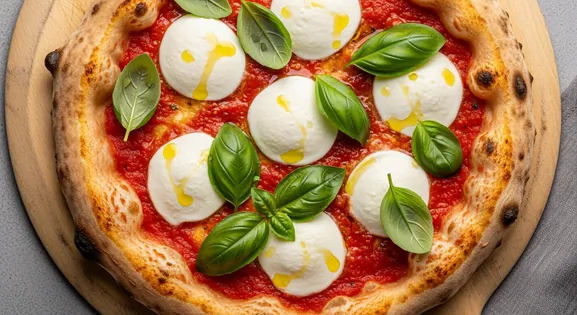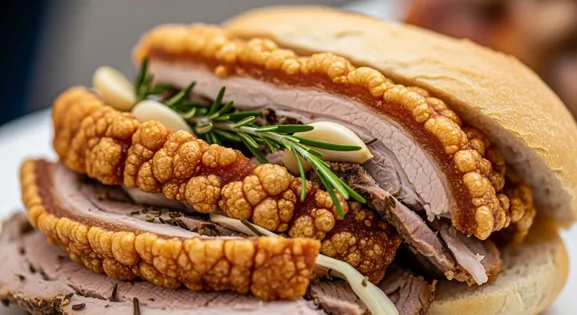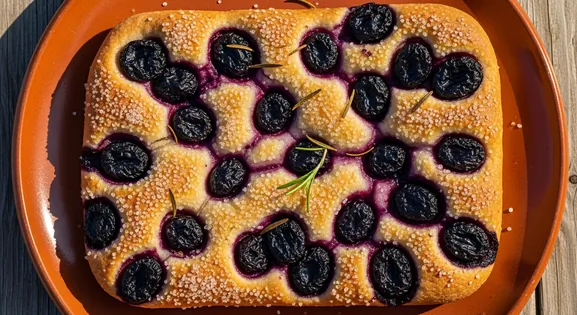Pappardelle al Cinghiale in Italy: A Complete Food Lover's Guide
Pappardelle al Cinghiale
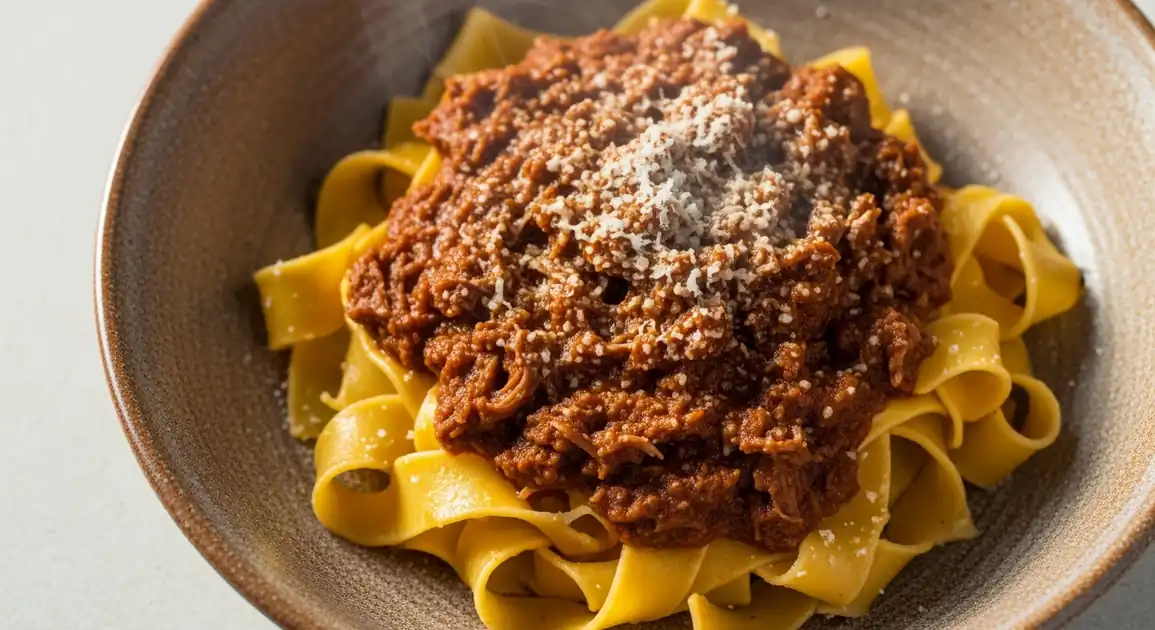
What is Pappardelle al Cinghiale (Wild Boar Pasta)?
Pappardelle al Cinghiale is a quintessential Tuscan pasta dish featuring wide, ribbon-like fresh egg pasta served with a rich, slow-cooked wild boar ragu. This hearty, rustic specialty showcases Italy's culinary tradition of pairing handmade pasta with game meats. The sauce combines tender wild boar pieces with red wine, tomatoes, herbs, and often juniper berries, creating a deeply flavorful, slightly gamey profile that embodies the bold, earthy character of authentic Tuscan cuisine.
Traditional Preparation Techniques
Authentic preparation begins with marinating wild boar meat (typically shoulder or leg) in red wine with aromatics (juniper berries, bay leaves, rosemary, black pepper) for 12-24 hours to tenderize and reduce gaminess. The meat is then browned and slowly braised with soffritto (diced onions, carrots, celery), tomatoes, and the marinating liquid until fork-tender (usually 2-3 hours minimum). Meanwhile, the pasta dough is made with flour and eggs, rolled thin, cut into wide ribbons (pappardelle), and boiled briefly until al dente. The pasta is then tossed with the ragu, allowing it to absorb the flavors, and typically finished with a light grating of aged Pecorino Toscano cheese.
Key Ingredients of Pappardelle al Cinghiale (Wild Boar Pasta)
Pappardelle Pasta
These wide, flat egg pasta ribbons are traditionally handmade, offering a substantial and satisfying base for the rich ragu. Their broad surface and slightly rough texture are ideal for holding the chunky sauce, ensuring every bite is flavorful.
Quality indicator: Look for fresh, slightly irregular pasta with a rough texture, indicating it's handmade and will absorb the sauce well.
Wild Boar (Cinghiale)
The star of the dish, typically shoulder or leg meat, slow-cooked until incredibly tender. It provides a rich, gamey flavor that is distinct from other meats.
Quality indicator: The meat should be fork-tender and shredded, not uniform cubes, with a deep, savory aroma.
Red Wine
Often a robust Tuscan red like Chianti, used for marinating the boar and as a braising liquid. It adds depth, acidity, and helps tenderize the meat.
Quality indicator: The wine should contribute a complex, aromatic note to the ragu, not an overpowering alcoholic taste.
What to Serve with This Dish
Tuscan Red Wine
Wine
A robust Sangiovese-based red like Chianti Classico or Brunello di Montalcino perfectly complements the richness and gamey notes of the wild boar ragu, cutting through the fat and enhancing the flavors.
Crusty Tuscan Bread (Pane Toscano)
Bread
Unsalted Tuscan bread is ideal for "fare la scarpetta," soaking up every last drop of the delicious ragu, ensuring no flavor goes to waste.
Tracing the Roots of Pappardelle al Cinghiale (Wild Boar Pasta)
This dish epitomizes Tuscan 'cucina povera' (poor cooking) philosophy, utilizing the abundant wild boar that has roamed Tuscan forests since Etruscan times. Historically, hunting wild boar was both a necessity for controlling the animal population and for providing protein to rural communities. The tradition of pairing game with wide pappardelle pasta dates back centuries, as the substantial noodles were designed specifically to hold hearty, rustic sauces. The dish gained prominence in medieval Tuscany when wild game hunting was a noble pursuit, and the recipes were refined during the Renaissance in Florence, a period that saw significant culinary development under Medici patronage.
Local Pappardelle al Cinghiale (Wild Boar Pasta) Variations in Italy
Pappardelle al Ragù di Cinghiale Toscano
The classic Tuscan preparation, featuring wild boar marinated in red wine with juniper berries and herbs, slow-cooked into a rich ragu. Considered the most authentic version.
Pappardelle al Cinghiale e Funghi Porcini
A seasonal autumn variation that incorporates porcini mushrooms into the wild boar ragu, adding earthiness and umami depth to the dish.
Pappardelle al Cinghiale con Olive e Pinoli
A regional variation that includes black olives and pine nuts in the sauce, adding Mediterranean flavors and textural contrast.
Pappardelle al Cinghiale Bianco
A 'white' version without tomatoes, using only wine, stock, and herbs to create a lighter-colored but still flavorful sauce.
Pappardelle al Cinghiale e Cacao
A sophisticated variation with a touch of cocoa powder added to the sauce, a technique borrowed from some traditional game recipes to add richness and complexity.
A Traveler's Guide to Authenticity
What to Look For
-
Properly slow-cooked, tender meat
Wild boar should be thoroughly cooked. The meat should be tender enough to pull apart easily with a fork, indicating proper cooking time (minimum 2-3 hours of simmering) for optimal quality.
-
Fresh, house-made pasta
Fresh pasta should have a slightly irregular appearance and rough texture. This indicates it's made in-house rather than from pre-packaged sources, ensuring better quality control.
-
Clear description of sourcing
Restaurants that specify their wild boar is sourced from regulated hunting or farms ('cinghiale toscano,' 'cacciagione locale') demonstrate responsible sourcing and quality control.
-
Rich aroma with wine and herbs
A proper wild boar ragu should have a complex aroma with notes of wine, herbs (rosemary, juniper, bay leaf), and a mild gamey scent. This indicates proper marinating and cooking techniques.
What to avoid
-
Extremely gamey or 'off' smell
While wild boar naturally has a slightly gamey aroma, an overwhelming or unpleasant smell may indicate improper handling or aging of the meat.
-
Uniform, cube-like meat pieces
Suspiciously uniform pieces may indicate pre-packaged or processed meat rather than properly prepared wild boar. Authentic ragu has irregular, shredded pieces.
-
Excessively greasy sauce
While the sauce should be rich, excessive oil floating on top suggests poor preparation or an attempt to mask low-quality ingredients.
-
Suspiciously low prices in tourist areas
Quality wild boar and handmade pasta require proper ingredients and preparation time. Extremely cheap versions in tourist areas often use inferior ingredients or pre-made components.
Explore Pappardelle al Cinghiale (Wild Boar Pasta) in Detail: City Guides
Discover where to find the best Pappardelle al Cinghiale (Wild Boar Pasta) and learn local tips in these cities:
Dietary Information
Dietary Information
Important Note for Travelers: Your safety is our priority. Below are the common allergens associated with the traditional preparation of this dish. However, recipes and ingredients can vary significantly between establishments. Always confirm all ingredients directly with the food vendor before ordering, especially if you have a severe allergy.
Potential Allergens
Dietary Suitability
How to Order Pappardelle al Cinghiale (Wild Boar Pasta)
Frequently Asked Questions about Pappardelle al Cinghiale (Wild Boar Pasta)
What is Pappardelle al Cinghiale?
Pappardelle al Cinghiale is a traditional Tuscan pasta dish featuring wide, flat egg pasta ribbons (pappardelle) served with a rich, slow-cooked wild boar (cinghiale) ragu. The sauce typically includes meat braised with red wine, tomatoes, and aromatic herbs, exemplifying Tuscan cuisine's emphasis on game meats and fresh pasta.
Is wild boar meat well-prepared in Italy?
Wild boar meat in Italy is generally well-prepared by reputable restaurants. Italy has strict regulations for game meat. The long, slow cooking process (usually 2-3 hours minimum) ensures the meat reaches proper temperatures for optimal quality. Choose established restaurants specializing in game or Tuscan cuisine for the best experience.
How can I identify a good Pappardelle al Cinghiale dish?
A good Pappardelle al Cinghiale should feature fresh, handmade pasta with a rough texture that helps the sauce cling. The pasta should be al dente. The ragu should be rich but not soupy, with tender, easily breakable wild boar pieces. Flavor should be complex with wine, herbs, and mild gaminess. Avoid uniform meat pieces or overly greasy sauces.
What wine pairs well with Pappardelle al Cinghiale?
Traditional Tuscan red wines like Chianti Classico, Brunello di Montalcino, or Vino Nobile di Montepulciano pair exceptionally well. These Sangiovese-based wines have the acidity to cut through the richness and enough tannin structure to complement the gamey notes. Many restaurants will recommend their house red (vino della casa), an excellent and affordable pairing.
Can I get Pappardelle al Cinghiale if I have dietary restrictions?
Pappardelle al Cinghiale contains wheat and eggs (in pasta) and may include dairy. It's not suitable for vegetarians or vegans. Gluten-free versions are rare in traditional restaurants, though some modern establishments might offer alternatives. Always inform your server about specific allergies, as the sauce may contain ingredients like celery or wine.
When is the best season to eat Pappardelle al Cinghiale in Italy?
While available year-round, Pappardelle al Cinghiale is traditionally a fall and winter dish. The wild boar hunting season in Tuscany typically runs from November to January, making this the prime time for authentic versions with freshly hunted meat. Many locals consider it best during colder months when its hearty qualities are most appreciated.
Expert How-To Guides about Pappardelle al Cinghiale (Wild Boar Pasta)
How to Spot an Authentic Pappardelle al Cinghiale
Learn to identify traditionally prepared wild boar pasta, ensuring a high-quality culinary experience across Italy.
- Look for the term 'fatto in casa' (homemade) or 'pasta fresca' on the menu, indicating the pappardelle is made in-house.
- Authentic pasta should be wide (at least 2cm), slightly irregular in width, and have a rough texture that holds the sauce.
- The wild boar should be slow-cooked and tender enough to break apart easily with a fork.
- The sauce should be rich and concentrated, coating the pasta rather than pooling on the plate.
- Check if the restaurant mentions 'cinghiale locale' or 'cinghiale toscano,' suggesting locally sourced wild boar.
- Traditional preparations often include juniper berries, bay leaves, and rosemary - sometimes mentioned on the menu.
- Be wary of extremely low-priced versions in tourist areas - quality wild boar and hand-made pasta require proper pricing.
Eating Pappardelle al Cinghiale Like a Local
Follow these steps to enjoy this Tuscan specialty with the appreciation and customs of local Italian diners.
- Use a fork to twirl the wide pasta ribbons - never cut them with a knife.
- It's perfectly acceptable to use a piece of Tuscan bread ('pane toscano') to mop up remaining sauce - this is called 'fare la scarpetta' and is appreciated as a compliment to the chef.
- Pair with a glass of Tuscan red wine, ideally Chianti Classico or Brunello di Montalcino.
- Eat as a 'primo piatto' (first course) before a main course of meat or as a standalone lunch.
- If offered, accept a sprinkle of freshly grated Pecorino Toscano on top - never Parmesan in traditional Tuscan dishes.
- Take your time - this is a dish meant to be savored slowly, not rushed.
Choosing the Right Restaurant for Pappardelle al Cinghiale
Find establishments across Italy serving the most authentic and high-quality versions of this classic dish.
- Avoid restaurants with pictures of food or multilingual menus displaying 'tourist menus'.
- Look for places filled with locals, especially at lunch (1-2 PM) or later dinner (after 8 PM).
- Check if the restaurant is family-run ('a conduzione familiare') - often indicated in reviews or on their website.
- Restaurants displaying the 'Vetrina Toscana' logo participate in a regional program promoting authentic Tuscan cuisine.
- Search for establishments that mention their pasta is 'tirata a mano' (hand-rolled) or 'fatta in casa' (homemade).
- Seek out establishments known for traditional regional cuisine rather than those near major attractions.
- Check if wild boar is listed as 'del nostro territorio' (from our territory) or 'cacciagione locale' (local game).
Our Commitment to Quality
At Tasteplorers, our mission is to provide the most accurate and useful travel information in the world. To achieve this, all content on this site is created through our unique editorial framework. We utilize leading AI research tools, guided by our proprietary prompts, and a multi-stage validation process. This entire system is overseen by our editorial team to ensure everything we publish meets our high standards for accuracy, cultural nuance, and practical value for travelers.
Learn more about our Editorial Process and our Mission.
Countries
Explore regions
Europe
Discover Europe's diverse culinary landscape, from Mediterranean flavors to hearty Alpine fare. Learn to navigate markets, decode menus, and eat like a local.
Latin America & Caribbean
Discover the vibrant cuisines of Latin America & the Caribbean. Our expert guide covers everything from Mexican street food to Peruvian ceviche and market tips.
Oceania
Explore Oceania's diverse food scene. Learn about Polynesian earth ovens, Fijian feasts, and the vibrant café culture of Australia and New Zealand.
Southeast Asia
Explore Southeast Asia's diverse food cultures from Thailand to Vietnam. Get expert tips on navigating spice levels, choosing quality vendors, and understanding the rich traditions of the region.
